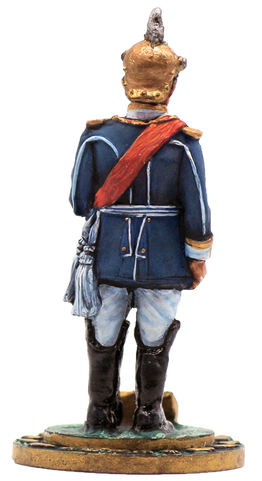
William Ernest
Grand Duke of Saxe-Weimar-Eisenach
William Ernest, Grand Duke of Saxe-Weimar-Eisenach (Wilhelm Ernst Karl Alexander Friedrich Heinrich Bernhard Albert Georg Hermann, English: William Ernest Charles Alexander Frederick Henry Bernard Albert George Herman; 10 June 1876 – 24 April 1923), was the last Grand Duke of Saxe-Weimar-Eisenach. He was born in Weimar, the eldest son of Karl August of Saxe-Weimar-Eisenach, heir to the Grand Duke, and his wife Princess Pauline of Saxe-Weimar-Eisenach. He succeeded his grandfather Karl Alexander as Grand Duke on 5 January 1901, as his father had predeceased him. His heir was a distant cousin, Prince Hermann of Saxe-Weimar-Eisenach, until his disinheritance in 1909. Hermann's younger brother subsequently served as heir presumptive to the Grand Duchy of Saxe-Weimar-Eisenach until the birth of William Ernest's eldest son. Wilhelm Ernst created the new Weimar town centre under the direction of Hans Olde, Henry van de Velde, and Adolf Brütt. He also had the University of Jena rebuilt by Theodor Fischer and also reconstructed Weimar's theatres. The improvements to the city included a marble statue of his predecessor Charles Alexander, which was completed in 1911. It was placed in a setting designed by Brütt. The placement of the setting was designed to distinguish the "old town" from the newly built area. A preservation law for the "old town" barred it to the "art nouveau"-style which was used in the new area. According to the Dutch constitution, Wilhelm Ernst was in the line for the throne of

the Netherlands (as the grandson of Princess Sophie of the Netherlands) after Queen Wilhelmina. At the beginning of the 20th century, the Dutch feared the possibility of German influence or even annexation of the Netherlands. In order to prevent this, some lawyers tried to change the constitution to exclude Wilhelm Ernst from the succession. Another proposal, however, was this: if Wilhelmina would die childless, then he or his offspring would have to choose between the Dutch and the Weimar throne.

The 1st Royal Saxon Guards Heavy Cavalry (Garde-Reiter-Regiment (1. Schweres Regiment)) was a heavy cavalry of the Royal Saxon Army. Established in 1680 as a cuirassiers unit, the regiment fought in the Battle of Vienna (1683), the Nine Years' War, the War of the Spanish Succession, the Silesian Wars, the Napoleonic Wars, the Austro-Prussian War, the Franco-Prussian War and World War I.

Saxe-Weimar-Eisenach (German: Sachsen-Weimar-Eisenach) was a state of the German Empire, created as a duchy in 1809 by the merger of the Ernestine duchies of Saxe-Weimar and Saxe-Eisenach, which had been in personal union since 1741. It was raised to a grand duchy in 1815 by resolution of the Vienna Congress. In 1903, it officially changed its name to the Grand Duchy of Saxony (German: Großherzogtum Sachsen), but this name was rarely used. However, many people continued to call it Saxe-Weimar-Eisenach, to avoid confusion with the neighbouring Kingdom of Saxony. The full grand ducal style was Grand Duke of Saxe-Weimar-Eisenach, Landgrave in Thuringia, Margrave of Meissen, Princely Count of Henneberg, Lord of Blankenhayn, Neustadt and Tautenburg. The Saxe-Weimar-Eisenach branch has been the most genealogically senior extant branch of the House of Wettin since 1672.
Awards: Sash and star of the Order of the White Falcon, Collar and star of the Saxe-Ernestine House Order, Insignia of the Order of Saint Stephen of Hungary.






